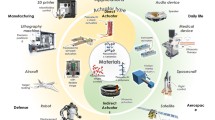Abstract
Hybrid accelerometers comprise sensor elements from different technologies, capable of combining two output signals into a highly linear response. Typically, a piezoaccelerometer would be combined with a MEMS accelerometer to extend an otherwise AC coupled response down to DC. The complementary filter function is an effective and distortion-free method for combining a DC capacitive sensing element that is critically damped with an AC piezosensing element; however, this method does not work well with lightly damped DC sensing elements. A detailed examination was undertaken of the issues that arise when combining AC and DC sensing elements where the damping factor of the DC sensor element is < 1, as is the case with many MEMS piezoresistive accelerometers. Results include earlier work with a prototype hybrid accelerometer, as well as a later analytical model to investigate in detail the complex interaction between system parameters that lead to distortion, nonlinearity and changes in impulse response when lightly damped DC sensing elements are combined. The analysis concludes with a post-processing method investigated for the removal of spurious transformation coefficients that currently preclude the use of lightly damped DC sensors.






















Similar content being viewed by others
References
Broch, J.T.: Mechanical Vibration and Shock Measurements, Chapter 6 Section 6.2. Selection of Accelerometer, p. 102. Brüel & Kjær, Nærum (1980)
https://buy.endevco.com/amfile/file/download/file_id/6509/product_id/4950/
Piersol, A.G., Paez, T.L.: Harris’ Shock and Vibration Handbook, 6th edn, p. 10.9. McGraw-Hill, New York (2010)
Chu, A.: TE Connectivity Sensors—Choosing the Right Type of Accelerometer. Measurement Specialities, Inc., p. 4 ‘DC Accelerometers’
https://www.analog.com/media/en/technical-documentation/data-sheets/ADXL1001-1002.pdf
Ferranti GB Patent No. 2146775A April 24, 1985 and US Patent No. 4,611,491 September 16, 1986
Westhora, K.: Extended low frequency sensor designs. In: European Telemetry and Test Conference, vol. 34. Dytran, Inc. (2014)
Neeshpapa, A., et al.: A low-noise DC seismic accelerometer based on a combination of MET/MEMS sensors. Sensors 15, 365–381 (2015)
https://www.bksv.com/-/media/literature/Product-Data/bp2170.ashx
Massachusetts Institute of Technology, Understanding Poles and Zeros, pp. 10–11
Feedback Systems an Introduction to Scientists and Engineers, Draft V2 July 2007 (University of California, Santa Barbara), Chapter 2.1, pp. 29–33 ‘Modelling Concepts’
Analog and Digital Signal Processing, PWS Publishing Company, Ashok Ambardar, Chapter 9 Section 9.2.4 p. 384-387 ‘Pole-Zero Placement and Filter Design’, incl. Fig. 9.8
Broch, J.T.: Mechanical Vibration and Shock Measurements, Brüel & Kjær, Chapter 6 Section 6.6, pp. 122–125 ‘Practical Considerations in Mounting Accelerometers’ (1980)
IEEE Control Systems Magazine June 2007 Jesse B. Hogg and Dennis S. Bernstein, pp. 46–47 ‘Blocking Effect of a Zero’
Ogata, K.: Modern Control Engineering, 3rd edn., Chapter 8, Minimum-phase systems and nonminimum-phase systems, Prentice Hall, pp. 486–487, (1997)
Ambardar, A.: Analog and Digital Signal Processing, PWS Publishing Company, Chapter 8 Section 8.5, pp. 346–348 ‘The s-plane and BIBO Stability’
IEEE Control Systems Magazine June 2007 Jesse B. Hogg and Dennis S. Bernstein, p. 54 ‘Zero Cancellation and Hidden Unstable Poles’
Christiansen, D.: Analysis of Dynamic Behaviour, The Electronics Engineers Handbook, 5th edn, Control Systems pp. 19.10–19.11 (2005)
Acknowledgements
The authors wish to acknowledge the University of Western Australia (UWA) School of Mechanical and Chemical Engineering for the use of research equipment used for prototype testing in 1999–2000. Similar acknowledgement is extended to the UWA Faculty of Engineering, Computing and Mathematics for the use of MATLAB in the development and testing of the analytical model used for simulation in 2013–2014. The authors gratefully acknowledge UWA Research Commercialisation for their support during 2013–2014.
Author information
Authors and Affiliations
Corresponding author
Additional information
Publisher’s Note
Springer Nature remains neutral with regard to jurisdictional claims in published maps and institutional affiliations.
Rights and permissions
About this article
Cite this article
Greenhalgh, R., Drew, S.J. An Experimental and Analytical Study of Hybrid Accelerometers. Acoust Aust 47, 247–260 (2019). https://doi.org/10.1007/s40857-019-00161-6
Received:
Accepted:
Published:
Issue Date:
DOI: https://doi.org/10.1007/s40857-019-00161-6




